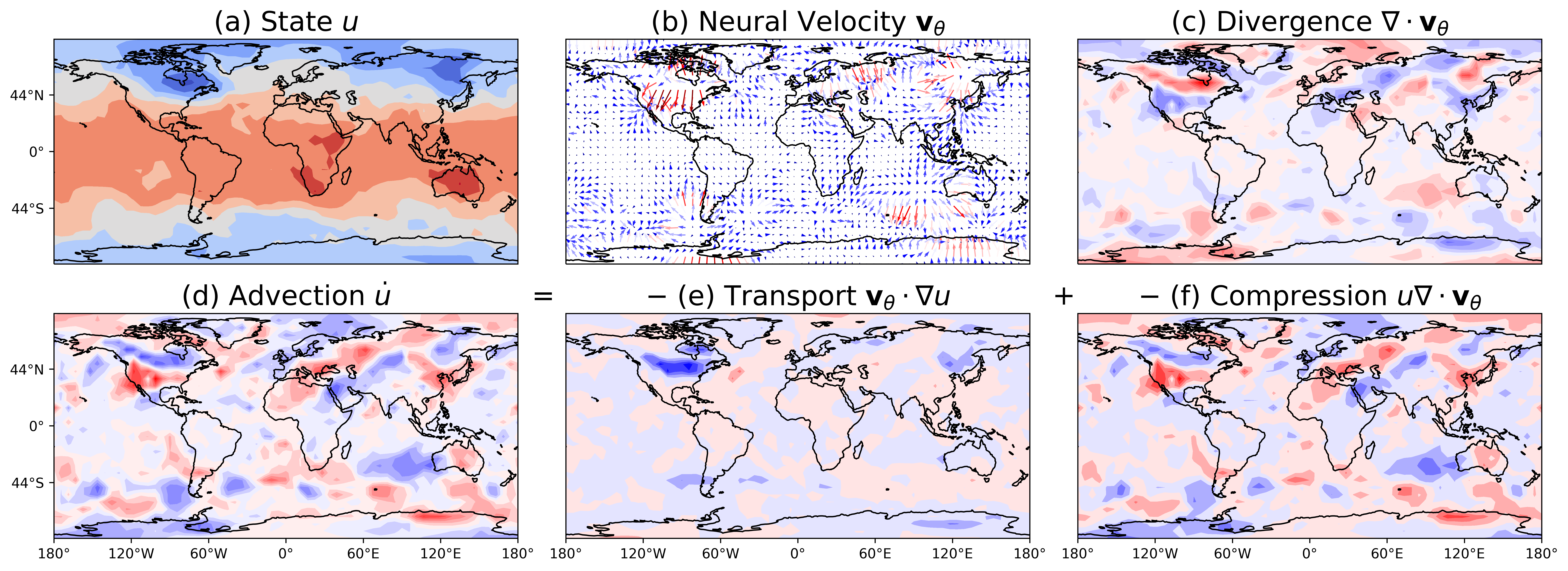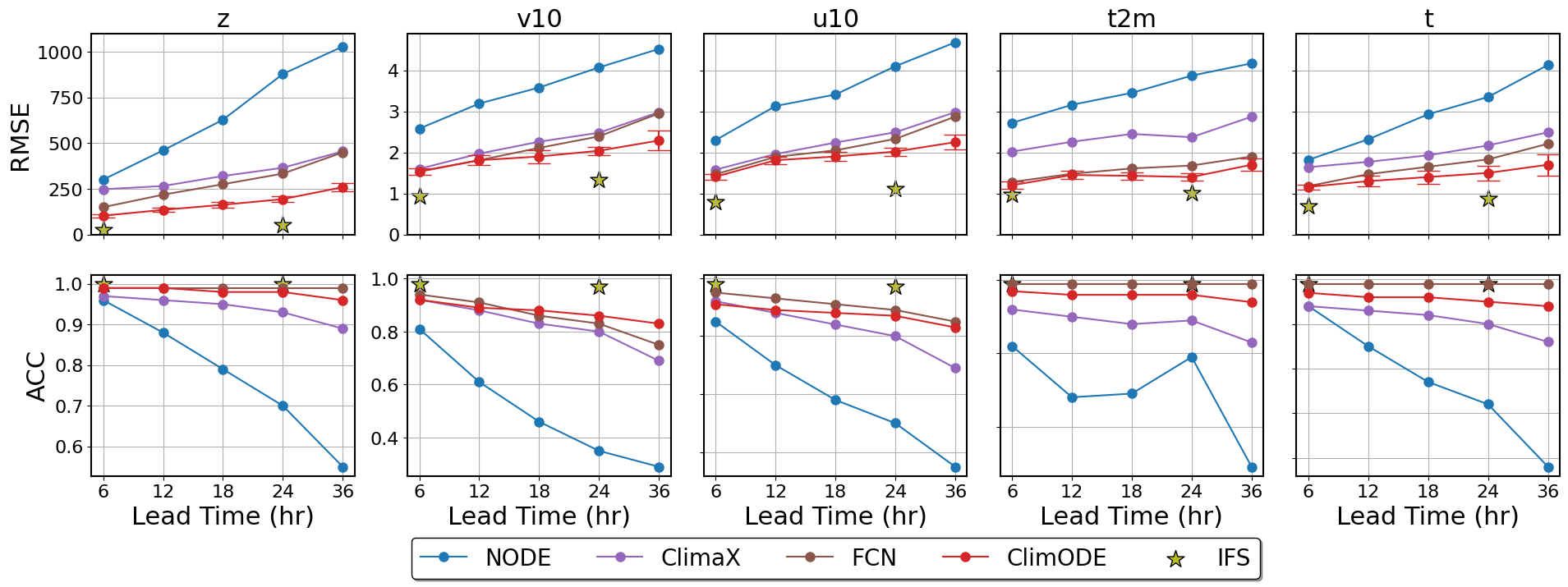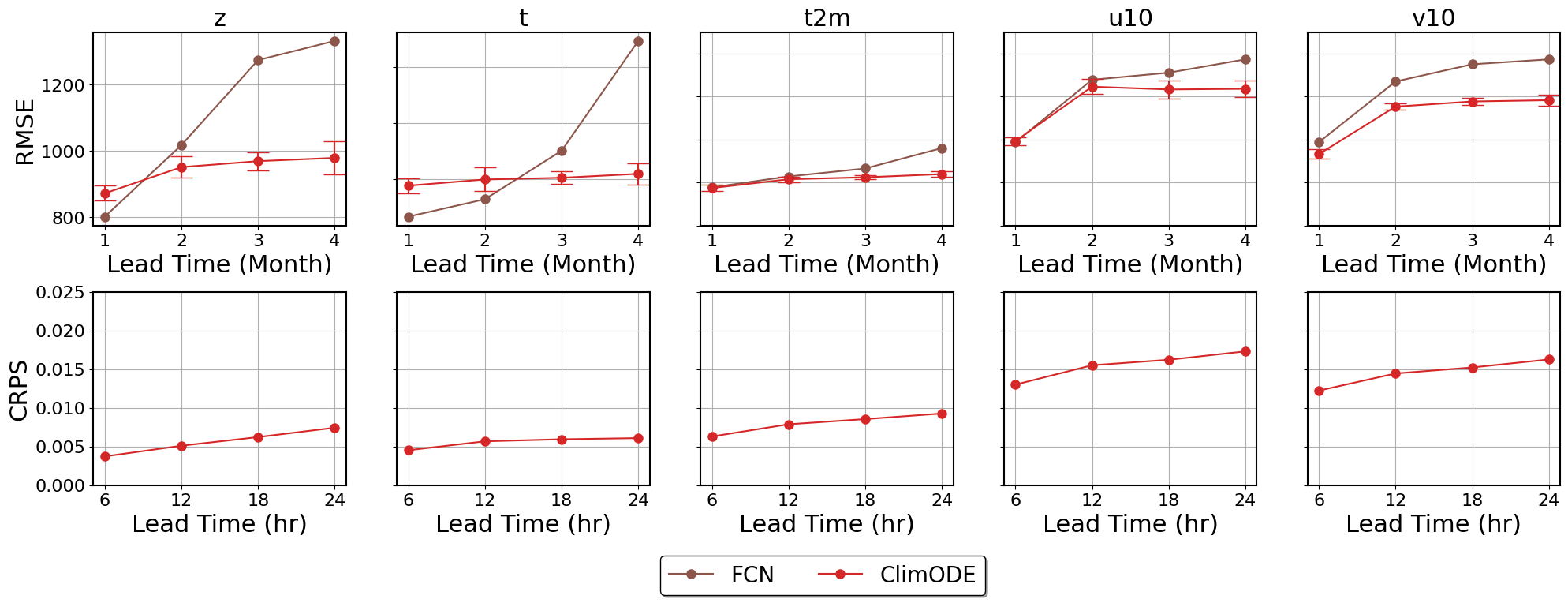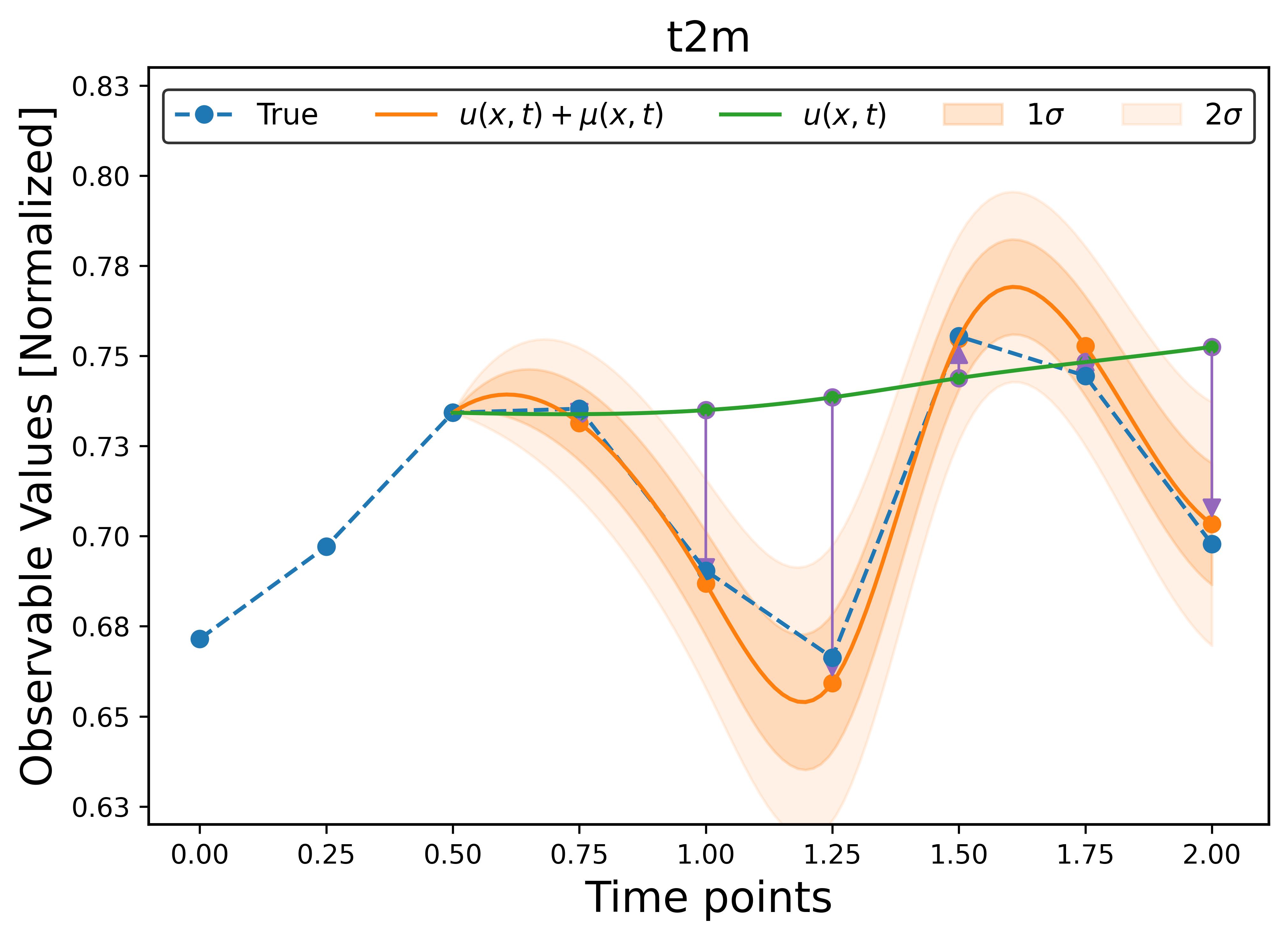Method Overview

Our method whole pipeline. Based on initial velocity estimates, the advection ODE component serves as the foundational backbone of the model, projecting future predictions. These projections are subsequently forwarded to the emission model, further refining them by estimating bias and uncertainty, ultimately yielding the final predictions.
Neural Transport Model
We model weather/climate as a spatiotemporal process u(x,t) = (u1(x,t),...,uK(x,t)) of K quantities as an advection PDE,


Flow velocity
We model the flow velocity by parametrising it as a function of u(t)= {u(x,t) : x ∈ Ω }, spatial gradients ∇ u(t), current velocity v(t) and spatiotemporal embeddings ψ as,



Results
Global Forecasting

CRPS Scores and Monthly Forecasting

Ablations
Effect of emission model
The right plot shows model predictions u(x,t) of ground temperature (t2m) for a specific location while also including emission bias µ and variance σ . Remarkably, the model captures diurnal variations and effectively estimates variance .
The bottom plot highlights bias and variance on a global scale. Positive bias is evident around the Pacific ocean , corresponding to daytime, while a negative bias prevails around Europe and Africa, signifying nighttime. The uncertainties indicate confidence in ocean estimation, with northern land regions being challenging.


Effect of individual components

Additional results and analysis
• Results for regional forecasting, longer-lead times of various quantities and comparison to baselines
• Abaltion to check the mass-conserving property of the ODE-system.
• Correlations among the data variables.